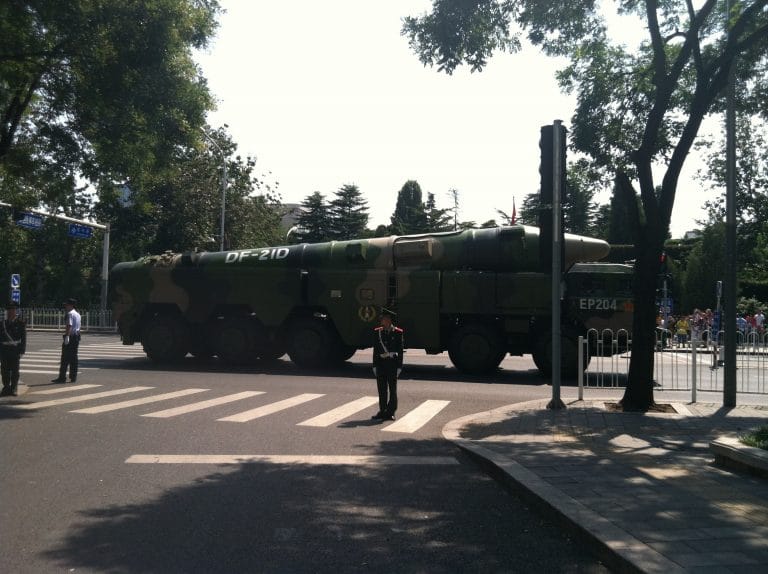
During a Tuesday hearing before the Senate Armed Services Committee, U.S. Indo-Pacific Command (INDOPACOM) commander Adm. Philip Davidson said China has been testing anti-ship ballistic missiles in an “unmistakable message” to the U.S. and other nations in the region.
“The PRC is not merely developing advanced weapons systems but is increasingly employing them in training and exercise scenarios to hone PLA
warfighting skills and send an unmistakable message to regional and global audiences,” Davidson said, in a prepared statement ahead of the Senate hearing.
Davidson noted an August incident in which Chinese forces fired several missiles, including a Dongfeng DF-21D “Carrier-Killer” missile, at a target ship near the disputed Paracel Islands. The missile tests came on the same day USS Mustin sailed a “freedom of navigation” exercise near the islands.
“These mid-range, anti-ship ballistic missiles are capable of attacking aircraft carriers in the western Pacific, and their employment during a large-scale PLA exercise demonstrates the PLA’s focus on countering any potential third-party intervention during a regional crisis,” Davidson said.
China’s military strategy in the disputed South China Sea and the wider Indo-Pacific region has appeared to focus on “anti-access area denial”(A2/AD), involving a strategy of using weapons and systems that can quickly seize control of the region and prevent other nation’s navies from reentering the region. Davidson said China’s A2/AD methods “threaten the U.S. ability to project power into the region.”
According to the Center for Strategic and International Studies (CSIS), China’s DF-21D missiles has an estimated range of 1,450 to 1,550 km (about 900 to 963 miles). The DF-21D is also believed to be able to maneuver to potentially avoid missile interception. China brought the missile into service in 2006 and, for the first time in 2013, China tested the missile against a ship target the approximate size of a modern-U.S. aircraft carrier.
Further on in his prepared remarks, Davidson said China is continuing to militarize the contested South China Sea by deploying new military equipment to artificial islands it has built in the region and Chinese forces are training in the region “with an emphasis on amphibious landing, joint fires, and maritime strike scenarios.”
Davidson said China’s activity in the South China Sea is not consistent with its assurances it would not militarize the region. In addition to regular People’s Liberation Army Navy (PLAN) forces, Davidson noted China’s regular forces in the region are “augmented by an armada of China Coast Guard ships, fishing boats, and other para-military forces that serve as force multipliers.”
During the Senate hearing, Davidson also warned that China has a vast “disinformation machine” that employs around a million people to help advance propaganda campaigns aimed at undermining U.S. interests in the Indo-Pacific region and create doubt among U.S. allies that they can rely on the U.S.
0 comments :
Post a Comment